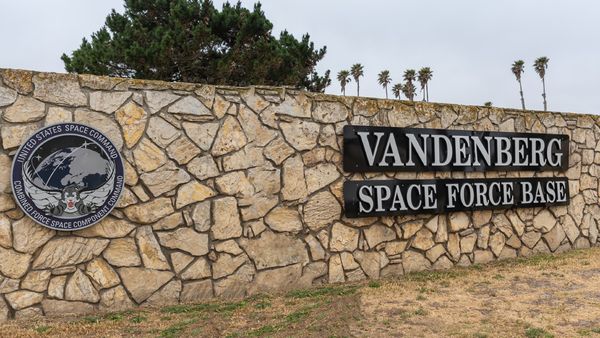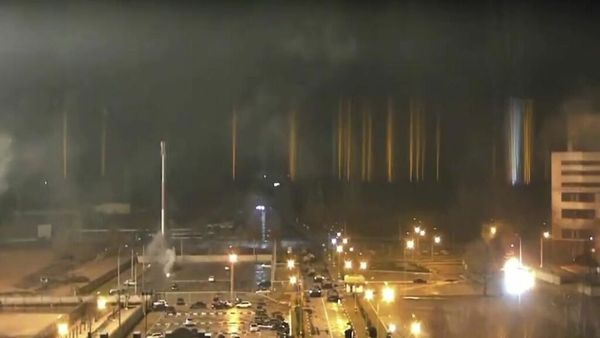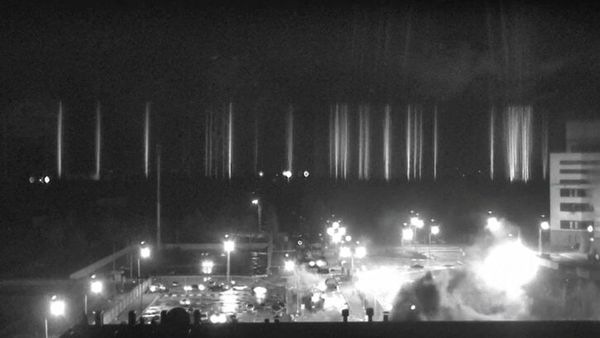
Russian troops on Friday seized Ukraine's Zaporizhzhia nuclear power plant, the largest in Europe. Ukraine is heavily dependent on nuclear energy and has 15 operative nuclear reactors that generate roughly 54% of the country's electricity needs.
The World Nuclear Association, an international body that represents the industry, gave the following information about the country's nuclear power sector
WHAT SORT OF NUCLEAR PLANTS DOES UKRAINE OPERATE?
Ukraine's reactors are located in four separate plants. All 15 are water-water energy reactors (VVER), which means they are water cooled and water moderated. They were originally developed in the Soviet Union. Twelve of the reactors came on line in the 1980s, one in 1995 and two in 2004.
The plants generated some 13,107 gigawatt electrical (GWe) in 2020, the third largest amount of nuclear generated power in Europe after Russia (27,653 GWe) and France (61,370 GWe).
They are all operated by a state company -- Energoatom.
WHERE ARE THE PLANTS?
Four reactors are clustered in the Rivne plant, in northwest Ukraine near the Belarus border, and two are in the Khmelnitski plant, some 180 km (110 miles) southeast of the Rivne site. Three reactors are in the South Ukraine plant, some 170 km to the north of the port city of Odessa. The remaining six reactors operate in the giant Zaporizhzhia plant.
ARE THEY THREATENED BY THE FIGHTING?
Russian forces seized the Zaporizhzhia plant overnight. A volley of shells set off a huge blaze at a training centre in the plant. This was extinguished on Friday. The International Atomic Energy Agency (IAEA) said the plant was undamaged and that only one reactor was working, at around 60% of capacity.
An Energoatom official said Russian troops were near the town of Voznesensk, about 30 km south of the South Ukraine plant. He said that a bridge entering the town had been blown up, slowing their advance.
The Rivne and Khmelnitski plants do not appear to be under any immediate threat.
WHAT ABOUT CHERNOBYL?
The now defunct Chernobyl nuclear plant sits some 108 km (67 miles) north of the Ukrainian capital Kyiv. One of its four reactors exploded in 1986, spewing clouds of radiation across Europe. The site is still radioactive and a huge protective dome covers the destroyed reactor. The area was seized by Russian forces on Feb. 24.
ARE UKRAINE'S EXISTING PLANTS LIKE CHERNOBYL?
No. Ukraine's current reactors are much safer than the "first generation" Chernobyl reactors. Energoatom has also spent millions of dollars in recent years to implement safety modernisations at all plants.
SO THE PLANTS ARE SAFE, DESPITE THE WAR?
While nuclear reactors are extremely strong and designed to withstand accidental aircraft crashes, they would obviously be vulnerable if they were targeted by modern weaponry.
Additionally, the IAEA has warned that staff stressed by the fighting could unwittingly make mistakes. That means the wellbeing of nuclear workers was "a humanitarian issue, but not only, it's also a technical issue," IAEA chief Rafael Grossi told reporters on Friday.
(Reporting by Crispian Balmer;Editing by Elaine Hardcastle)










